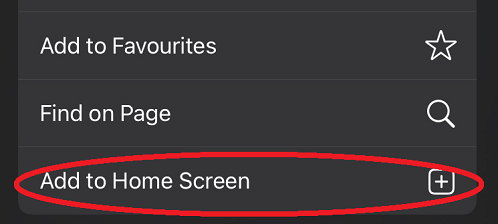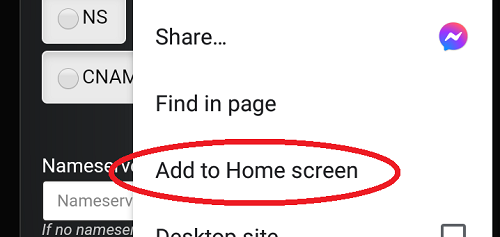Using the WHOIS tool, you can search for information on domain names, IP addresses,
ASN’s and their associated CIDR-ranges. The returned information may include
info on owner/manager, contact information, and any relevant technical details.
The tool allows you to make
- Classic WHOIS lookups
- RDAP lookups, for more accurate and up-to-date information
The tool allows you to search for:
- Domain names
- IP addresses
- ASN’s - network operators of the internet
- CIDR’s - ip blocks/announced prefixes maintained by the network operators (ASN’s)
Samples
For a quick introduction, try out these WHOIS-lookups:
WHOIS of google.com
WHOIS of facebook.com
WHOIS of bbc.co.uk
WHOIS of 8.8.8.8
WHOIS of ASN15169
FAQ
What is WHOIS and what information does it provide?
WHOIS is a database lookup service, based on a simple query/response protocol. It
is used to provide information about domain names, IP addresses, ASNs and CIDRs,
making it a valuable resource for anyone looking for ownership and technical
details of a particular online entity.
What is RDAP and why is it used in this tool?
RDAP, or the Registration Data Access Protocol, is a standard protocol for
accessing registration information, using RESTful API calls. RDAP provides a
more secure, flexible, scalable and standardized way of accessing WHOIS
information compared to the traditional WHOIS protocol.
What is an ASN and a CIDR in relation to WHOIS?
The Internet is a vast network of smaller interconnected networks. These smaller
networks, often called autonomous systems (AS), are responsible for managing
the flow of data between different parts of the Internet.
Each AS is assigned a unique identifier known as an Autonomous System Number (ASN).
The ASN is used to identify the operator of the network and to control the routing
of Internet traffic to and from the network.
Using WHOIS and/or RDAP you may lookup details on each of these ASN’s.
Furthermore - each AS/ASN manages one or more blocks of ip addresses on the internet.
These blocks are called network prefixes, and are described using the CIDR notation.
These CIDRs, and all related technical information, is also searchable using
WHOIS and RDAP.
Is the information in a WHOIS search result always up-to-date?
WHOIS information is maintained by third-party organizations, and is therefore subject
to updates and inaccuracies. While the accuracy of the information can vary, the online
WHOIS tool will provide the most recent information available in the WHOIS database
at the time of the search. However, it is important to keep in mind that WHOIS
information may not always reflect real-time changes, such as the transfer of a
domain name to a new registrar or the assignment of a new IP address.
What if the information I'm looking for is not available in the WHOIS database?
In some cases, the WHOIS information may not be available in the WHOIS database. This
can occur for several reasons, such as if the registrar or registry has not yet
updated the information, if the domain name is being transferred to a new registrar,
if the domain name is new and has not yet been fully registered or if the information
has been redacted due to privacy reasons.
If the information you're looking for is not available in the WHOIS database, you can
contact the relevant registrar or registry for more information.
How does WHOIS and RDAP work from a technical perspective?
There are minor differences, but in general, you can query any WHOIS server by opening up
a TCP/IP connecting to it at port 43, and then just simply typing in the domain or
IP-range you would like to get info on.
Webpages and tools, such as iamroot.tech, do nothing special but this – when you hit the
submit button, we traverse the WHOIS structure, until we get the correct info for you.
RDAP works a bit differently, as it is based on RESTful API’s using HTTP communication.
The query is basically contained in the URL, and the response is a very well structured
JSON result. This makes RDAP less readable for humans, but as the information is way
better structured and standardized, it is perfect for code and software to parse, use
and display in a readable manner.
WHOIS and RDAP specifications (RFC’s)
The original specification for WHOIS was documented in the early days of the Internet in
RFC 812 (1982), but
this has since been updated and superseded by (among others)
RFC 3912.
RDAP (Registration Data Access Protocol) is a newer protocol that is intended to replace
WHOIS as the standard for accessing registration data. The main difference between
RDAP and WHOIS is that RDAP provides a more structured and standardized format for
the data returned, making it easier to automate and process the data. The current
standard for RDAP is defined in
RFC 7482.
These RFCs provide the technical specifications and guidelines for using WHOIS
and RDAP, and are essential references for anyone who is working with these
protocols.
 DNS lookup
DNS lookup
 DNS propagation check
DNS propagation check
 Port scan + probeing
Port scan + probeing
 WHOIS / RDAP lookup
WHOIS / RDAP lookup
 HTTP/S request tool
HTTP/S request tool
 TLS/SSL certificate checkbeta
TLS/SSL certificate checkbeta E-mail DNSBL blacklist check
E-mail DNSBL blacklist check
 Reverse DNS
Reverse DNS
 CIDR calculatorbeta
CIDR calculatorbeta ASN database lookupbeta
ASN database lookupbeta What is my IPv4 and IPv6?
What is my IPv4 and IPv6?
 GeoIP location
GeoIP location
 QR code generator
QR code generator
 Color contrast checker
Color contrast checker
 Color picker
Color picker
 Lorem ipsum generator
Lorem ipsum generator
 URL encode/decode
URL encode/decode
 HTML encode/decode
HTML encode/decode
 BASE64 encode/decode
BASE64 encode/decode
 Hash calculator (CRC64 - MD5 - SHA - RIPEMD)
Hash calculator (CRC64 - MD5 - SHA - RIPEMD)
 Password generator
Password generator
 World map, day/night + local timebeta
World map, day/night + local timebeta


